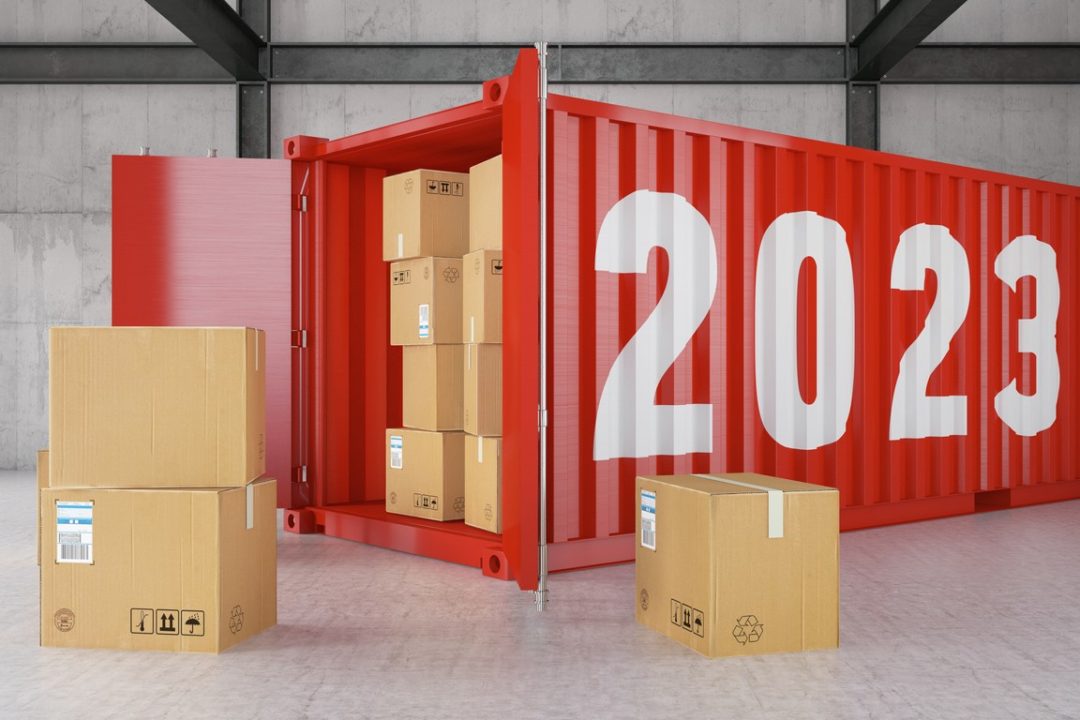
Think Tank
The Future of Warehouse Automation: What to Expect in 2023

The marketplace continues to evolve, impacted by changing consumer demands and global supply chain shortages. But some warehousing organizations have been slow to adopt the technologies that will best enable them to keep pace. Will they still resist in the coming year?
Many organizations are casting their eyes on what’s ahead in the new year. It’s highly likely that warehouses will more actively embrace automation technologies in 2023 to manage tight labor markets, increase inventory capacity and expand visibility into their supply chain operations.
What will that look like? As we bid farewell to 2022, warehouse automation will help address three marketplace trends.
1. Labor will continue to be a challenge. No matter what happens with the economy, labor will continue to be a pain point, especially for warehouse operations. Even in communities with more workers available, undesirable work shifts and lengthy commutes often deter people from accepting critical warehouse positions. That causes problems for distribution centers struggling to meet extreme demands under strict deadlines — seen frequently around high-demand shopping events such as Black Friday and the pre-holiday surge.
This tightness in the labor market will drive additional usage of Robots-as-a-Service-based automation services to lower capital expenditures and deploy automation based on subscription. That is particularly important because, while historically somewhat reluctant, companies are already adopting autonomous solutions to cut costs. Automation options such as autonomous mobile robots and piece-picking solutions are gaining traction.
Undoubtedly, these technologies will become integral to easing labor shortages in distribution centers next year, especially during times of increased demand.
2. A human workforce will remain vital in the automation equation. Despite claims that human labor will become obsolete, people will remain a critical component of the automation equation in the warehouse. The market has realized that automation does not execute missions autonomously, so keeping human workers in the loop is essential to maintaining smooth operations. Robots make repetitive, manual functions more effortless. As a result, employees can shift their focus to higher-level areas where robots can’t integrate.
Another trend that goes together with keeping humans in the loop involves inventory density in the warehouse. Because various events have disrupted the entire supply chain over the past few years, fulfillment operations are starting to shift from a just-in-time. They are expanding capacity to hold more items.
This is pushing inventory out of retail stores and into locations such micro-fulfillment centers. The shift in inventory means distribution centers must think more strategically about density and what they can do with existing space. In the coming year, we'll see companies looking more creatively at how they can maximize storage capacity without needing to change locations or expand infrastructure.
3. Supply chain visibility will become paramount. The largest stable retailers have unique positions within the market because their business lines are already well understood. Specifically, big retailers know the SKU assortments they will offer in retail stores and, therefore, have the benefit of building out solutions specifically for those locations.
High-growth retailers, manufacturers and third-party logistics providers, meanwhile, have a challenge: how to build out the optimal supply chain solution without knowing product demands even six months from now. To succeed in this highly variable environment, these companies must achieve flexibility through system interoperability. When identifying automation solutions, it’s critical that they evaluate the solutions’ level of interoperability with the entire market of solutions they might consider required in their future network.
Without that level of interoperability and a “future solution mindset,” companies might find themselves tearing out solutions they recently deployed. In 2023, we will see more investment in technology that not only provides the insights necessary to better understand what is happening within distribution centers, but also closes the interoperability gap.
While these three trends should really take hold in 2023, the next five years will be truly fascinating. During this period, we’ll be able to take the “gig economy” model for human labor and apply it to automation. That means we'll see projects where automation is needed for only a short time to get things running — maybe for even just a few weeks.
For example, a newly opened store might need support to handle peak demand. Or a company changing business lines might need extra support to accommodate the shift in orders. Those types of scenarios will usher in the advent of genuinely flexible — even mobile — automation, and that will be fun to watch.
As we say goodbye to 2022, however, warehouse organizations that invest in the right automation technologies will help set the stage for their future success.
T.J. Fanning is senior vice president of sales at SVT Robotics.






